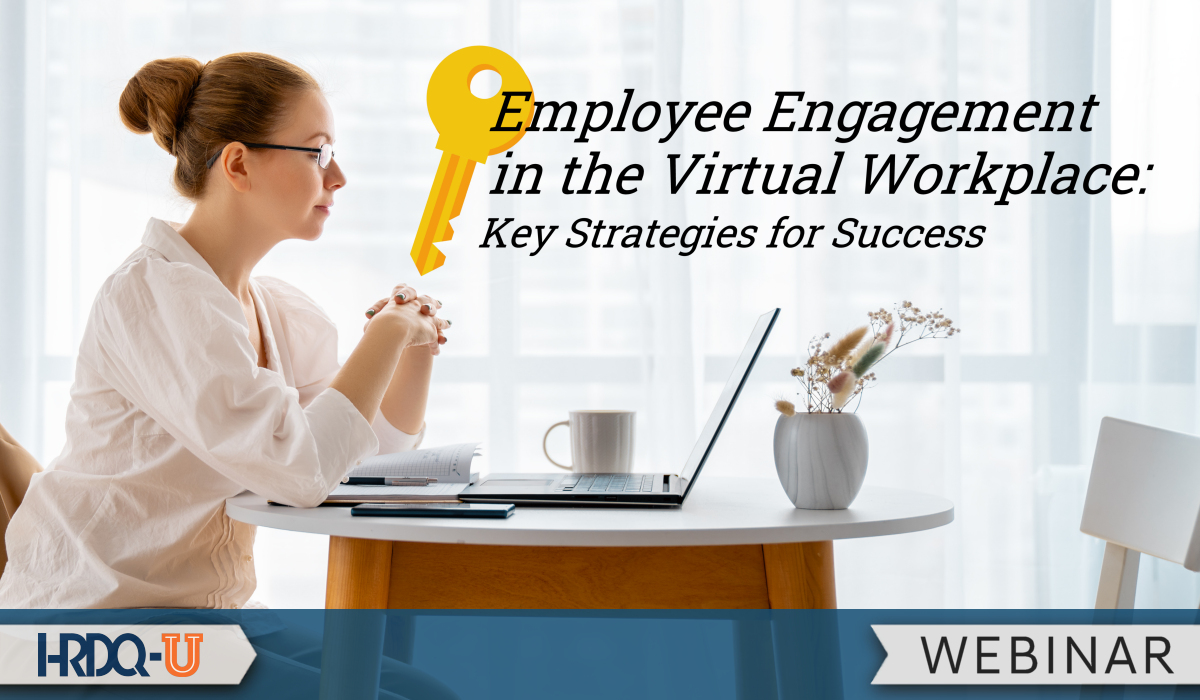What Are the Signs of Engagement and Results?
When employees are engaged, they are emotionally invested in and connected to their work. Multiple signs can help you determine whether or not your employees are truly engaged in their work.
Signs of engagement include
- A sense of pride in the work
- A high level of enthusiasm
- A willingness to “go the extra mile” on behalf of the team or organization
This results in greater retention, increased job satisfaction, lower absenteeism, and better customer service. Many traditional means of boosting employee engagement are no longer feasible in a remote or hybrid work arrangement. Compounding the challenge is that no definitive playbook exists for engaging remote workers – every organization and team will have its own approach. The good news is that implementing a few simple but powerful strategies can significantly amplify engagement among your remote/hybrid employees.
Trust
According to the authors of a 2018 global survey by ADP Research Institute, “Trust in team leaders is the foundation of Engagement,” when the authors examined the most engaged teams around the world, they found that “by far, the best explainer of the level of Engagement was whether or not the team members trust their team leader.”
More specifically, the study suggests that a worker is twelve times more likely to be fully engaged if they trust the team leader.
In the face of post-Covid organizational challenges, e.g., difficulty sustaining team cohesion, loss of access to leadership, decreased informal interactions, etc., trust in one’s team leader has taken on even greater import.
Seven Ways to Build Trust
- Demonstrate accountability: Accountability means “owning” the results and outcomes of your actions and decisions. Regretfully, the news showcases leaders who point fingers and place blame when things go wrong. This blame is not leadership; this is cowardice.
- Provide and encourage open, honest communication: All communication should be clear and straightforward, from performance objectives to feedback to team updates and briefings. In my experience, few things erode trust in a leader faster than disingenuous, hypocritical, or muddy messaging.
- Create an environment of “belonging”: Fundamentally, an environment of belonging is one in which all team members treat others with dignity and respect, and diverse opinions and perspectives are welcome. Leaders should not overlook their critical role in creating and maintaining team “culture” for better virtual employee engagement.
- Place team members first: Leadership is not an exercise in self-aggrandizement. It’s a sacred responsibility to the people with whom you work. To build trust, good leaders place the well-being and success of their people first and their own needs second. Robert Greenleaf, a founder of the modern servant leadership movement, wrote: “The servant-leader is servant first; it begins with a natural feeling that one wants to serve, to serve first, as opposed to wanting power, influence, fame, or wealth.”
- Value relationships, not just results: Results should never be pursued at the expense of relationships. When leaders encourage collaboration, shared learning, and meaningful connections among team members, trust increases, and positive outcomes typically follow.
- Offer constructive feedback: The feedback that diminishes, demeans, or discourages may work in some organizations but will fail miserably in most. In my experience, feedback that motivates, uplifts, and inspires is far more impactful. Remember that the root of “constructive” is “construct” – from the Latin word for “build together.”
- Provide frequent recognition and appreciation: Leaders tend to overestimate how much recognition and appreciation they show and underestimate its importance to people. Recognition and appreciation build trust because of the sense of community they create. In fact, approximately 90% of employees who receive thanks or recognition from their boss report feeling high levels of trust in that individual.
Psychological Safety: Employee Engagement Questions to Ask Your Virtual Team
Psychological safety is the #1 condition for trust to emerge in the workplace, playing a vital role in virtual employee engagement. Psychological safety is defined as the confidence that one can take interpersonal risks – speaking up, offering dissenting views, providing honest feedback, pointing out problems, etc. – without fear of reprisal.
Leaders should consider the following key questions:
- What clues am I seeing that psychological safety may be eroding or absent altogether? Signs may include lack of participation or attendance at meetings, withdrawal or isolation, missed deadlines, and lack of initiative.
- Am I as “in tune” with my people as I should be? In a virtual or hybrid environment, it’s easy to become disconnected from your team. You may not see team members as often, and distractions may be more prevalent. Carve out time each week to check in with people (as opposed to checking up on people). There is nothing wrong with inquiring as to an associate’s well-being. But don’t just ask, “Is everything going OK?”
Ask open-ended questions such as
- What are you working on?
- What do you enjoy most and least about your job?
- What do you want to do more of?
- What helps you be most productive?
- What is going well on your team?
- What is getting in the way?
- What more do you need from me to be successful?
These conversations don’t have to be long; in fact, frequent and brief conversations are better. But no matter what approach you take, keep in mind that the best leaders continually think about what opportunities exist to strengthen their connection to their people and maintain psychological safety. Employee engagement is more than just an HR fad – it can distinguish between average and exceptional results for your team or organization. This was always true, but increasing engagement through building trust and psychological safety is especially crucial in a virtual or hybrid workplace.
In Part 2 of this post, Dr. Michael Brenner will explore additional ways of driving employee engagement in the virtual workplace.













